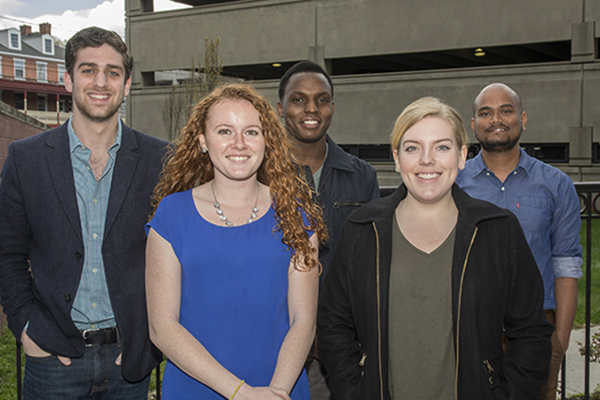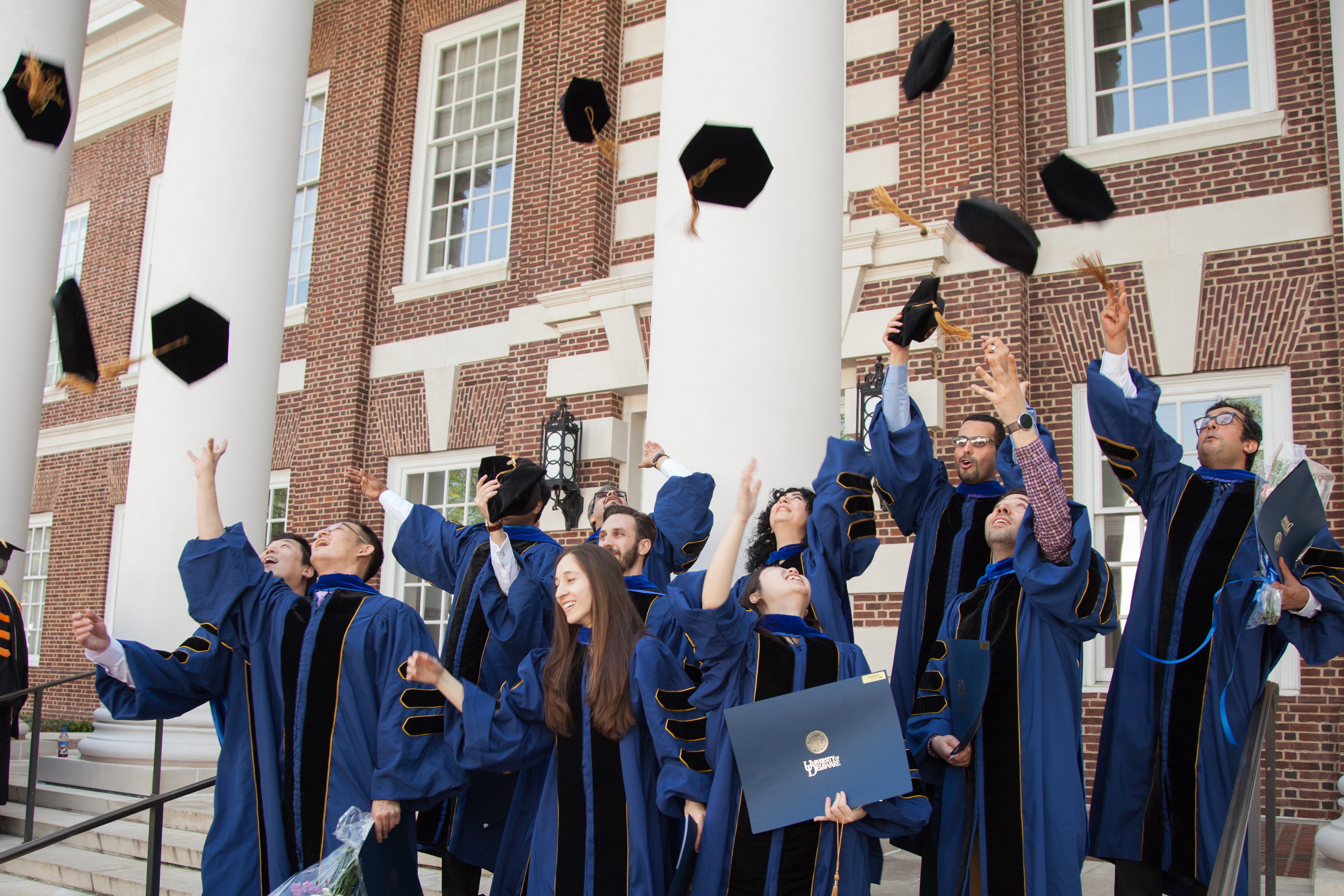
Student innovation
Students team up with entrepreneur to create HenScan app
7:13 a.m., April 14, 2016--Students and faculty running to catch the shuttle bus is not a rare spectacle at the University of Delaware campus, where the buses run continuously throughout the day.
This convenient resource is now even easier to use, with the advent of HenScan, an app that combines QR-code scanning technology with the UD transportation system to create a fast and efficient way to use the shuttle buses.
Campus Stories
From graduates, faculty
Doctoral hooding
HenScan, a student-built app, arrived quietly at the University last month, marked only by a few explanatory signs at selected bus stops. The HenScan team is now beginning its public promotion of the app. Download data will tell the team what impact its promotions have on usage.
Students worked on the project through the Office of Economic Innovation and Partnership, where a program called Spin In pairs interdisciplinary teams of undergraduates with entrepreneurs from early-stage companies.
In the program, students work with the entrepreneur to develop knowledge of the commercial potential for their products. This gives entrepreneurs practical knowledge for the advancement of their product, while giving students the opportunity to develop professional skills.
“The goal for OEIP and Spin In at the University of Delaware is to provide students with an experiential learning opportunity that will develop skills necessary for the 21st century workforce,” said Cyndi McLaughlin, assistant director at OEIP.
Spin In takes on a diverse array of entrepreneurial projects, and recruits students across all academic disciplines. The students that created the HenScan app have skills ranging from app creation to promotions.
Those cross functions are critical, said Ross Lefkowitz, leader of the HenScan team that also included Eli Munda, Abhijeet Srivastava, Cassy Galon, Katie Wall and Shannon Poulsen.
“Eli was able to identify a pilot program that adds utility, Abhijeet built a fully functional app extremely quickly, all of the branding and posters were designed beautifully by Cassy, and Katie and Shannon developed a killer marketing campaign,” Lefkowitz said.
The team dynamic is an integral part of the Spin In program, as it gives students the opportunity to experience a collaborative work environment while also maximizing perspectives for the product. In the case of this team, that product is a visually appealing QR code technology, brought to OEIP by entrepreneur Sean Wang.
Wang’s product allows for the QR code, often seen as a square of black and white figures, to have a more practical and aesthetic presence. Wang’s technology can embed any image onto the QR code. This allows the potential for eye-catching and identifiable QR codes.
For Wang’s QR code technology to succeed, it must overcome the general lack of interest for QR codes in the United States. Though QR codes are very popular in many countries, especially those in Asia such as China, Japan and South Korea, they have not caught on as well in the U.S.
Therefore, the goal of the Spin In team working with Wang’s technology was to encourage the integration of QR codes at UD.
“Our objective is to understand how college students interact with QR codes to understand possible commercial potential,” Lefkowitz said.
“Our strategy was to integrate QR codes in an area at the University that everyone has access to,” said Munda, a junior economics major. The University shuttle bus system was chosen by Munda and the team as a practical avenue to promote QR code integration.
The HenScan code has the image of a shuttle bus that, when scanned, takes users to the bus schedule. The objective is to encourage students to download and become comfortable with QR code technology. In order to track the QR code usage, HenScan was created with the ability to track when and where codes are scanned.
The HenScan app was launched on March 14, with signs placed strategically around campus. Usage data was collected.
This week, the team launched its "media blast" intended to encourage the use of HenScan and QR code technology through a variety of promotions. Social media including a Twitter and Instagram presence, a Twitter giveaway contest, and a promotional video are among the team's strategies.
Poulsen, team member and senior communications major, said: “The goals are twofold -- one is to increase the awareness and use of the HenScan app on campus. The other goal of our media blast is to see how effective such a blast can be at increasing application use.”
Data collected after the publicity launch will be used by the team to analyze the effect of promotional materials in QR code integration.
The app is available for free in the iTunes app store, and will soon be available to Android devices.
Article by Katie Wall
Photo by Doug Baker








